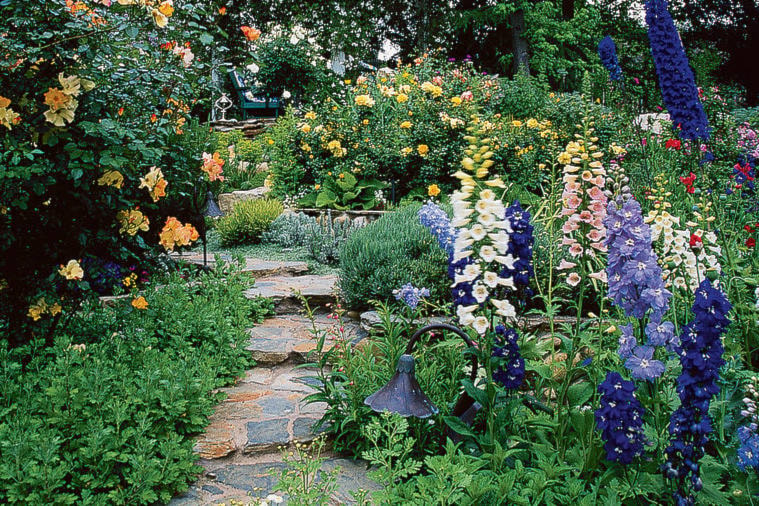Ellen Presley
Special to The Record
The cottage garden has had an amazing history over the last few hundred years, mostly based on the need for survival by the lower classes, which had to grow enough food to survive each winter.
The gardens consisted mostly of vegetables and medicinal herbs and a few flowers, all of which were jam-packed into a small plot of land about the size of our urban lots today.
It is this informal design and density of plantings that give the cottage garden its distinctive look. By using a variety of colours, textures and heights, you create a kaleidoscope that gives the garden a carefree look filled with charm. Whether you choose to plant more vegetables, or more flowers or herbs, is entirely up to your individual needs and preference.
As in all gardens, invest in good rich soil before you plant and choose the right plant for the right conditions. The healthiest plants need the least care because they are grown in their ideal conditions.
Select hardy, easy-care plants that have stood the test of time, and mix a variety of shapes and sizes to add interest. Traditional plants include perennials such as peonies, foxglove, hollyhocks, buddleia, globe thistle, verbena, nepeta, poppies, carnations, delphiniums, iris, phlox, and roses.
Favourite annuals include cosmos, snapdragons, alyssum, salpiglossis, nasturtium, dianthus, atocks, zinnias and salvia.
Herbs: borage, thyme, chives, rosemary, lavender and sage.
Once you have selected a variety of your favourite flowers, herbs and vegetables, don’t plant in rows. Instead, plant in random groupings along meandering paths wide enough for a wheelbarrow. The paths create a visual relief in the planting, and make the garden more welcoming and easier to maintain, especially if you use pea gravel, wood chips or grass, depending on the traffic.
It should have a relaxed feel, and let the plants slightly cascade over the paths and intertwine with one another. There should be a sense that you just discovered this secret garden and no one else has been there to control it. A sense of disarray adds to the charm.
Once you have planted, cover the soil with a mulch to keep the beds from drying out and to help prevent the weeds from growing. As the garden starts growing, you should have enough plants to use as a cutting garden for bouquets or vegetables to harvest during the summer.
Then start having fun with accessories: clay pots or lined woven baskets to fill with unusual flowers; pieces of a picket fence, a recycled birdbath or old wooden bench. Try to stick to natural material or vintage pieces that have that well-worn look. It should look like you just discovered them along the paths. Don’t get too carried away. By showing moderation, you avoid the junkyard effect.
The cottage garden is all about having fun, playing with colour and discovering nature. Plant what you like and don’t get hung up in the rules. In fact, let go of the rules and have fun. Happy gardening.
Ellen Presley is the owner of Anderton Nursery.
